
Original Link: https://www.anandtech.com/show/1799
ATI's X8xx CrossFire Graphics Arrive
by Derek Wilson on September 26, 2005 1:00 PM EST- Posted in
- GPUs
Introduction
Four months ago, ATI officially announced their first multi-GPU solution called CrossFire.
Two months ago, we previewed and benchmarked it.
And today, ATI lifted their NDA on CrossFire performance with the Radeon X850 XT.
Contrary to what we were all led to believe, CrossFire cards are still not available, so today, we have little more than what we had two months ago when we previewed the platform.
Obviously, drivers have improved tremendously since we first benchmarked CrossFire, but as you will soon see, the platform still isn't entirely perfect. You will also find that CrossFire performance is decent, however plagued by an unfortunate GPU limitation limiting current CrossFire setups to a 1600 x 1200 maximum resolution.
The timing of today's NDA lift is curious at best, given that ATI's next-generation GPUs are literally just around the corner. In fact, given things such as the current 1600 x 1200 resolution, we honestly wonder why this performance introduction wasn't delayed until ATI's R520 launch.
Meanwhile, NVIDIA has steadily been improving the quality and availability of their SLI platform, which was announced over a year ago. Across the vast majority of their product lines, ATI is playing a seemingly never-ending game of catch-up. From the delayed release of the R520 to CrossFire, things haven't been looking up for ATI. Let's see if the trend continues here today.
The Details of the Resolution Limit
The foremost issue we want to address in this section is that of the 1600x1200 resolution limit and the Single Link TMDS receiver on the CrossFire master cards. Much speculation has been passed around on the subject, and we wanted to get to the bottom of the issue. It is true that digital operation of the vast majority of ATI X8xx series parts are limited to single-link DVI speeds per display. ATI's position is that since most current X8xx series cards do not support dual-link output, a single-link receiver is all that is needed. This is a fine solution. The problem is that ATI is currently fixing maximum CrossFire resolution to 1600x1200@60Hz. While they have stated that it is technically possible for them to run resolutions at a similar pixel clock, they will not allow asymmetric timings between the TMDS receiver and the final output. In general, this means that any resolution larger than 1600x1200 will require a lower refresh rate than 60Hz. While this may be ok at HDTV resolutions or on a digital flat panel, CRT owners may elect to drop resolution even lower than 1600x1200 in order to play their games with a decent refresh rate. For an expensive, high end solution, a 1600x1200 60Hz limit is simply unacceptable.We asked ATI why the capabilities of the TMDS receiver on the master card must limit the resolution of CrossFire output to 1600x1200@60Hz. The answer is that scaling would diminish at higher resolutions due to the limited ability of the slave card to contribute in a balanced way. Granted, AFR (alternate frame rendering) modes could not be run and SuperTiling would have to be tweaked or dropped, but ATI does support 60/40 and 70/30 split frame load balancing as well. Enabling high resolutions only under their scissor mode should give some additional performance along with the ability to run at higher resolutions. To us, including the option for a customer to choose how the hardware he or she owns will work is absolutely a good thing. In our minds, a lower performing 2048x1536 is definitely better than not having the option at all. We would strongly urge ATI to consider adding such options in future driver releases if it is at all possible.
On top of that, multiple other options spring to mind on how resolutions could be increased. PCIe bandwidth could be used heavily to transfer screen data. NVIDIA has multi card configurations working with no direct physical link. In addition, it shouldn't be impossible for ATI to use both outputs on the slave card to send data to the master. Two single-link connections are the building blocks of a dual-link connection after all. But in the end, ATI stands behind their decision to implement CrossFire with a single-link resolution limit.
With maximum resolution limited, we must rely on features and quality to drive the decision to purchase a CrossFire setup. And the feature that ATI hopes will push CrossFire is their Super AA.
Super AA and CrossFire
By rendering the same frame on both cards with different subpixel sample patterns, the images can be blended together to provide a smoother image at any given resolution than a single card is capable of rendering. At the same time, as resolution increases and pixel size decreases, antialiasing becomes less important. This is yet more support for believing that greater than 1600x1200 resolutions should be supported on a high end setup like this.For those who will be running CrossFire solutions at 1280x1024 or even 1600x1200, Super AA will be a welcome addition to image quality. ATI already leads the industry in AA quality because they use a programmable sample pattern when antialiasing a pixel while NVIDIA uses a fixed ordered grid approach. The difference really starts to add up when SLI AA and Super AA are compared.
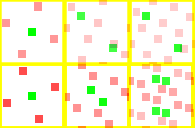
From left to right, 4xAA, 8xSLI AA/10xSuper AA, 16xSLI AA/14xSuperAA. ATI is the top row.
The more even spread that ATI is able to maintain over a single pixel gives the CrossFire solution a better result. Even though NVIDIA's 16x SLI AA has 16 geometry sample points and 4 texture sample points compared to ATI's 12 geometry points and 2 texture points, the distribution of ATI's sample points provide more efficient coverage. Incidentally, if ATI had named their modes like NVIDIA's AA modes, they would have said 20xAA rather than 16xAA.
NVIDIA's 4 texture sample points (essentially super-sampling/SSAA sample points) could provide better interior, texture, and transparent surface antialiasing. Unfortunately, their arrangement limits their usefulness in this regard. Thus we have to declare ATI the clear winner in the AA department. Of course, Super AA mode does take quite a performance hit as we will find out later. But take a look at what it can do to Half-Life 2 at 800x600 (no AA, 4xAA, 6xAA, 10xAA, 14xAA from top to bottom):
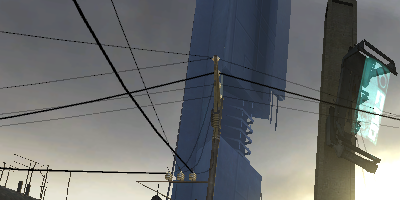
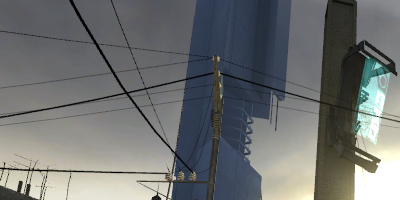
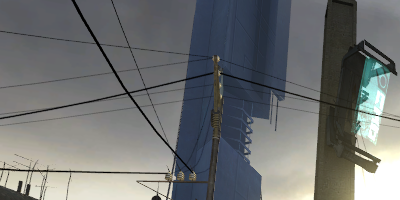
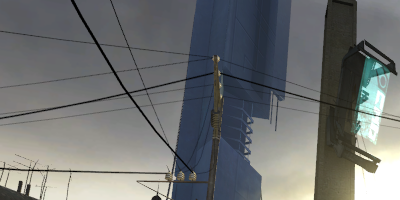
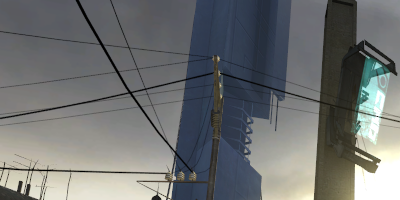
While differences beyond 4xAA are harder to spot, take a look at the antennae on the bottom-left of the images. You can see how the barely-visible parts are rendered better, particularly with the 10xAA and 14xAA modes. If you have the GPU performance to handle such features, they're a nice addition.
The down side of Super AA (aside from the performance hit) is that it will only run in full screen applications. Windowed applications are still stuck with 2x 4x 6x and no AA. Even if a Super AA mode is selected, only half the subpixel samples are used. We are not sure if this is a hardware or software limitation, but those of us who play MMORPGs in the background will need to be aware of this issue.
Hardware and Power
The components that go into a CrossFire system consist of the CrossFire master card, a slave card, a CrossFire dongle, and a motherboard with more than 1 PCI Express x16 slot. Here's the run down of our test system:AMD Athlon 64 FX-55
ATI Radeon Xpress 200 CrossFire motherboard
1GB DDR400 2:2:2:8 RAM
120GB Seagate 7200.7 HD
OCZ Powerstream 600W PSU
The CrossFire master card is basically an X850 XT with the addition of a Xilinx FPGA (for the compositing engine) and a TMDS receiver for taking input from the slave card. Instead of 2 DVI-D ports, the CrossFire master card makes use of a high speed DMS port. This connects to one port of the CrossFire dongle and takes the slave card input as well as providing the output to the monitor.
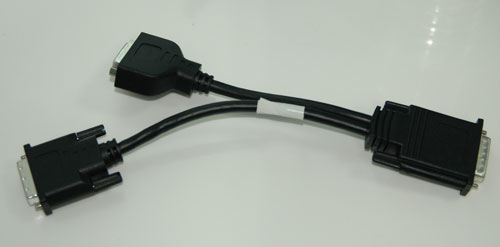
Other than that, the CrossFire card looks just like any other X850 XT out there.
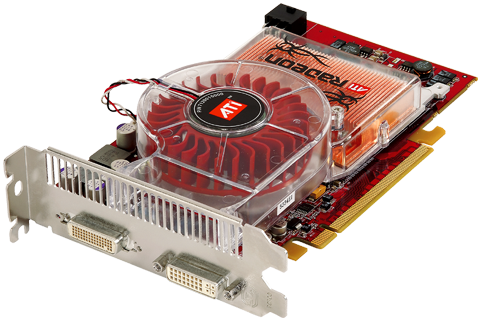
The CrossFire design is fundamentally different than NVIDIA's SLI. CrossFire uses an external compositing engine while NVIDIA's is built into the GPU. ATI handles communication via TMDS output from the slave card's framebuffer, while NVIDIA built a chip to chip communications protocol for multi-GPU operation. Both vendors offer extended antialiasing modes, but ATI offers an additional rendering mode called SuperTiling which cuts each scene up into a checkerboard pattern for rendering.
On both solutions, Alternate Frame Rendering (AFR) is the fastest mode, as this is the only mode that also accelerates geometry processing. In order to learn more about the details of how CrossFire works, please check out our previous article on the subject.
As for the stress all this hardware puts on a system when it's in action, here's a comparisons of idle and load power (under Splinter Cell: Chaos Theory). Power is measured at the wall before the PSU.
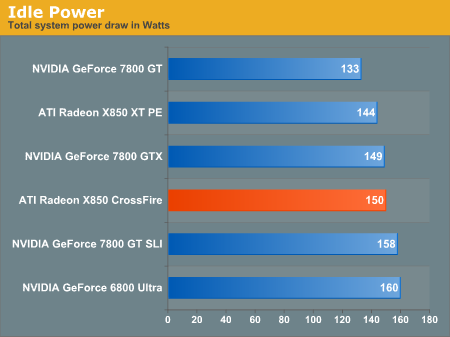
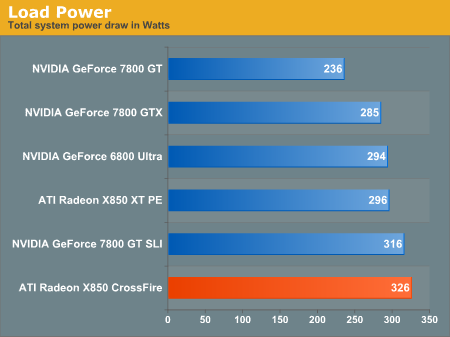
While the idle power draw is slightly lower than 7800 GT SLI, the load power is the highest of any of the measured setups. 7800 GTX SLI would be higher still, but X850 XT PE Crossfire is really closer to the 6800 Ultra SLI or 7800 GT SLI, so it's not a fair comparison. We'll have to wait for R5xx and Crossfire before we can get a good idea of how Crossfire competes with 7800 GTX SLI.
Gaming Performance
We have already taken a look into gaming performance under CrossFire when Gigabyte sent us some preproduction samples. We reran the numbers on ATI's final boards and drivers and here is what we ended up with.The numbers with no AA show CrossFire doing very well; even beating the 7800 GTX SLI in the very CPU limited Halflife 2. A bigger deal is that the X850 CrossFire actually outperformed the single 7800 GTX in Splinter Cell: Chaos Theory. Doom 3 generally favors NVIDIA hardware, and while the CrossFire setup can't match the 6800 Ultra SLI, it performs on par with the 7800 GTX. Battlefield 2 is a close race between the 6800 Ultra SLI and the X850 CrossFire setups.
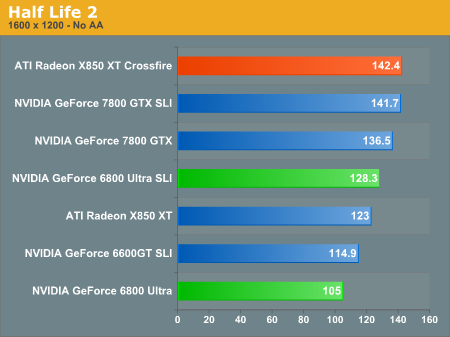
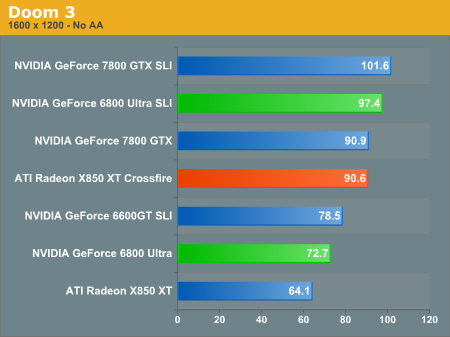
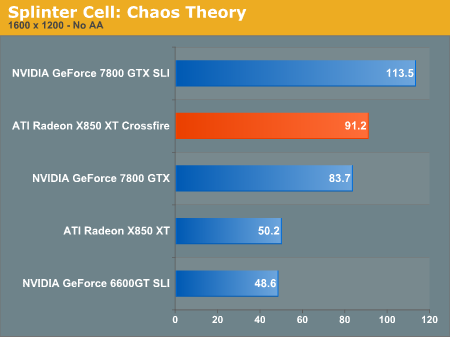
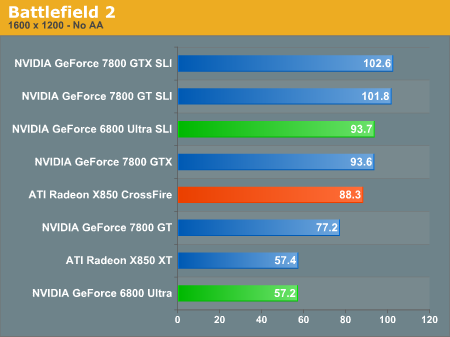
With AA enabled, CrossFire performs similarly well. The 7800 GTX SLI beats it in Halflife 2 this time around (even though both parts are still essentially CPU limited), and CrossFire gains ground on the NVIDIA parts. The performance impact of AA on NVIDIA hardware is slightly greater than on ATI hardware. The AA quality of ATI hardware is also better. Again Battlefield 2 is a close race, with a leadership changes favoring CrossFire.
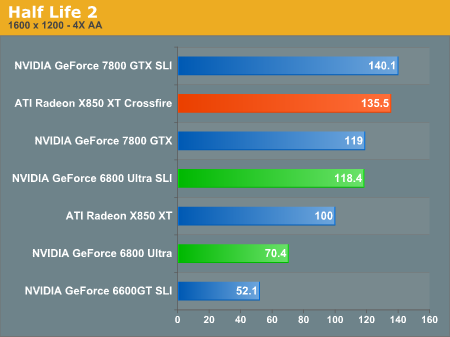
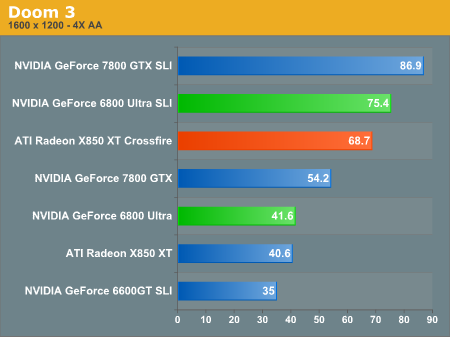
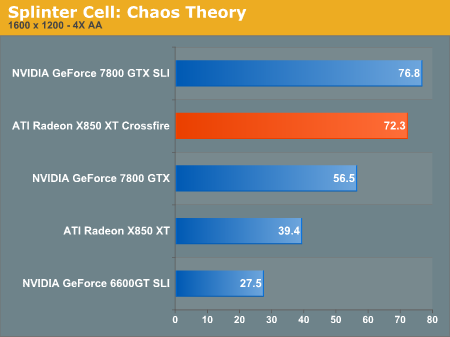
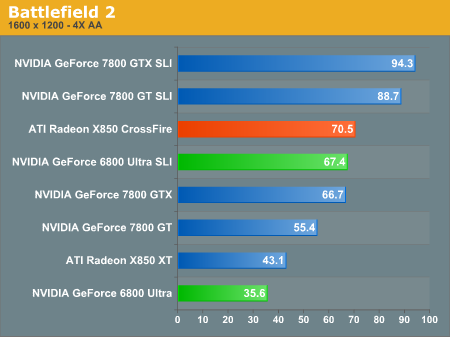
For those who wish to look back at our previous CrossFire article, you will quickly see that the CrossFire results have not changed much at all. The biggest difference here is Halflife 2 where CrossFire was already a stellar performer.
We didn't publish the results in the last article, but Battlefield 2 is now performing better having moved away from SuperTiling. The results before were not that bad, but we definitely see better numbers this time around.
Mode and Hardware Scaling
There are two scaling factors we want to pay attention to here. First, we will be looking at how CrossFire scales with AA mode. As 8x and 10x share the same performance numbers (as do 12x and 14x), we will be looking at: no AA, 4xAA, 6xAA, 10xAA, 12xAA modes. We will be able to see just how steeply Super AA modes drop off in this test.We will also be looking at single card performance. It will be important to compare these numbers to the Super AA numbers, as each card in Crossfire mode should ideally be able to render the entire scene at single card speeds. Any difference between the Super AA modes and a single card running at either 4x or 6x AA account for the overhead of the communication system and compositing engine. The performance drop in these modes is more pronounced than in the other modes, as each card needs to render the entire scene at full frame rate. Any latency or bandwidth limitations will show up more easily here.
Our graphs show frames per second on the y-axis and AA mode across the x-axis.
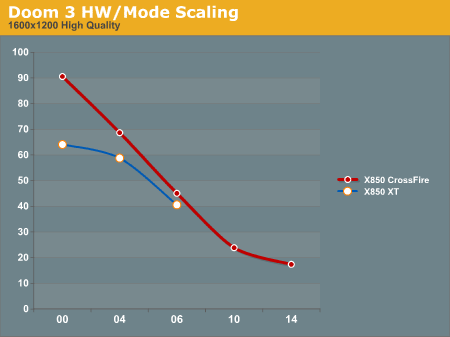
Doom 3 shows a good performance increase due to CrossFire at standard AA settings. Both the single card and CrossFire setup are similarly GPU limited as AA increases. The drop from 4xAA on a single card to 10xAA on CrossFire is nearly 50%.
When we take a look at Half-Life 2, we see that a single card is fairly GPU limited with increasing AA while CrossFire handles it well. Going from single card AA modes to CrossFire Super AA modes shows more than a 50% drop in performance. This is likely due to the fact that as framerate increases, the impact of latency and bandwidth restrictions on transferring fully antialiased scenes from the slave to the master is proportionally greater.
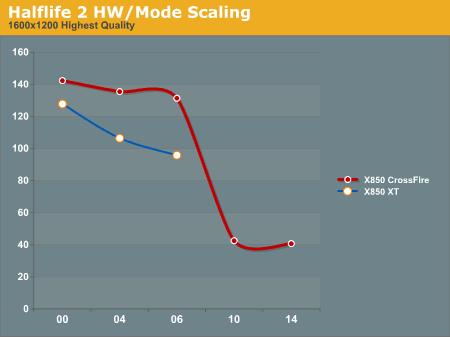
Here's a look at how going from a single to a two card configuration scales under NVIDIA and ATI hardware under the games we tested.
| Multi GPU % Performance Improvement (16x12 noAA) | |||
| Doom 3 | Battlefield 2 | Half-Life 2 | |
| CrossFire | 41.3 | 53.8 | 15.8 |
| SLI | 34.0 | 89.3 | 22.2 |
| Multi GPU % Performance Improvement (16x12 4xAA) | |||
| Doom 3 | Battlefield 2 | Half-Life 2 | |
| CrossFire | 69.2 | 63.6 | 35.5 |
| SLI | 81.3 | 89.3 | 68.8 |
While Crossfire performs reasonably well without AA, the 4xAA modes show that SLI provides better scaling. More importantly, though, the lack of support for higher resolutions - as well as 1600x1200 at higher refresh rates - becomes a serious limitation of Crossfire. 7800 GTX SLI running at 2048x1536 has no competition from any ATI configuration for the time being.
Final Words
The final verdict on CrossFire is very mixed. It is clear from our Game tests that SLI has a worthy competitor with parts in its price range at 1600x1200@60Hz and below. However, we have a hard time buying the idea that many gamers are going to shell out the money necessary for CrossFire with that kind of limitation. With cards like the 7800 GTX out there, and more interesting hardware from ATI coming soon, we are very inclined to recommend a single card upgrade. That recommendation is especially true for users who have 1280x1024 LCD panels or want larger than 1600x1200 resolutions from their graphics card.Fortunately, ATI has stated that near term future products will utilize dual-link TMDS receivers and allow users to run monitors like the 30" Apple Cinema display under CrossFire. While the TMDS communication is a very interesting solution to the multi GPU problem, limiting resolution based on available bandwidth just doesn't make sense to us. Scaling at the high end doesn't matter as much as compatibility. As long as bandwidth does limit output resolution, though, we are very happy to see ATI move to dual-link TMDS communication for their future parts.
It is very hard for us to support Super AA having seen the abysmal performance scaling we have shown here. With single cards using 4x and 6x AA more than doubling the performance of CrossFire with 8/10x and 12/14x AA, we can't understand why anyone would suffer the performance hit. In order for this to actually be useful, users would need to be monitor limited to 1280x1024 or below - in which case a CrossFire purchase is severely misplaced. At the high end, it is hard for us to believe that an increase in resolution to 1920x1440 (or even higher) would have as much of a performance hit. Maintaining a standard AA level on a high resolutions will likely provide better image quality than a low resolution with Super AA. It is also probable that performance would decrease less when scaling resolution beyond 1600x1200 than when enabling Super AA. Unfortunately, we don't even have the ability to test this theory properly with current hardware and drivers.
Despite exceptional performance at its target resolutions, we have to strongly recommend against the purchase of an X800/X850 series CrossFire card. (You also would probably need a motherboard upgrade for Crossfire anyway, making it even less attractive.) We have a hard time recommending all but the absolute top end NVIDIA 7800 GTX SLI as a viable solution. As an upgrade path, it makes generally much more sense to buy the next single card solution that comes out instead of spending money on older technology that won't scale as well, takes up a lot of space, eats up a lot of power, and likely incorporates fewer features. The only way we truly say that multi-GPU technology is a better solution than a similarly classed single card solution (even when upgrading from one card to two) is at the absolute highest end where there is no competition from a single card. And right now the king of the mountain is still a 7800 GTX SLI. But just how long will that last? Only time can tell.







